March is recognized as Women’s History Month, but the fight for gender equality in the United States is one that continues to this day. Women have made massive strides, earning the right to vote and own property, achieving higher education and leadership positions in the workplace, and we even have our first woman in the White House as vice president. However, there is still much to do in terms of protecting reproductive rights, supporting women of color, recognizing LGBTQ+ women, ending violence against women, and other endeavors. While we continue to work towards a more equitable future, it’s the perfect time to review some milestone moments in the women’s rights movement with the help of HeinOnline, including our very own Women and the Law (Peggy) database!
1. Seneca Falls Convention (1848)
The Seneca Falls Convention,[1]Elizabeth Cady; et al. Stanton. History of Woman Suffrage (2). This document can be found in HeinOnline’s Women and the Law database. the first convention for women’s rights actually organized by women, is generally regarded as one of the first efforts of an organized women’s rights movement. Hosted in Seneca Falls, New York in the summer of 1848, its 300 attendees included major activists such as Elizabeth Cady Stanton, Lucretia Mott, and abolitionist Frederick Douglass. The convention culminated in the signing of the Declaration of Sentiments[2]Woman’s Rights Convention. Report of the Woman’s Rights Convention, Held at Seneca Falls, N.Y., July 19th and 20th, 1848 (1848). This document can be found in HeinOnline’s Women and the Law database. which aired grievances and demands for women. The right to vote was the most controversial of the document’s requests, but after a speech by Frederick Douglass urging women to fight for suffrage, the resolution stayed.
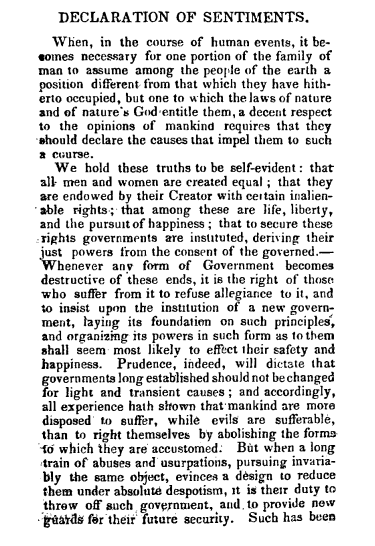
This first convention was soon followed by several others, becoming an annual occurrence and an important influence in the movement.
2. Ratification of the 19th Amendment (1920)
After decades of fighting for the right to vote, women finally achieved suffrage with the ratification of the 19th Amendment[3]Declaration of Independence and the Constitution of the United States of America (1934). This document can be found in HeinOnline’s World Constitutions Illustrated database. in 1920. The amendment came after years of controversy surrounding whether the women’s suffrage movement would support suffrage for Black men as well. Prior to the Civil War, abolitionists and suffragists worked closely together and helped each other in their common cause. However, after the Emancipation Proclamation,[4]Abraham Lincoln. Emancipation Proclamation (1950). This document can be found in HeinOnline’s Slavery in America and the World: History, Culture & Law database. free Black men justifiably wanted suffrage as well.

The 15th Amendment[5]Declaration of Independence and the Constitution of the United States of America (1934). This document can be found in HeinOnline’s World Constitutions Illustrated database. would provide Black men with the right to vote, but not women, and the suffrage movement became split between women who supported the 15th Amendment and women who didn’t want Black men to earn the vote before white women. Elizabeth Cady Stanton and Susan B. Anthony were part of the latter group,[6]Virginia Sapiro, The Power and Fragility of Social Movement Coalitions: The Woman Suffrage Movement to 1870, 100 B.U. L. REV. 1557 (2020). This article can be found in HeinOnline’s Law Journal Library. resulting in their cutting ties with the American Equal Rights Association (AERA) and forming the National Woman Suffrage Association (NWSA)[7]Virginia Sapiro, The Power and Fragility of Social Movement Coalitions: The Woman Suffrage Movement to 1870, 100 B.U. L. REV. 1557 (2020). This article can be found in HeinOnline’s Law Journal Library. to promote universal suffrage.
3. Equal Pay Act (1963)
In 1963, then-President John F. Kennedy signed the Equal Pay Act,[8]To prohibit discrimination on account of sex in the payment of wages by employers engaged in commerce or in the production of goods for commerce., Public Law 88-38, 88 Congress. 77 Stat. 56 (1963). This act can be found in HeinOnline’s U.S. … Continue reading which requires employers to pay equal wages for the same work, regardless of the employee’s gender. During World War II, more women than ever before joined the workforce and performed the jobs that men had left behind when they joined the military. The Women’s Equal Pay Act,[9]“Women’s equal pay act of 1945.” U.S. Congressional Serial Set, , 1946, p. 1-10. HeinOnline, https://heinonline.org/HOL/P?h=hein.usccsset/usconset22995&i=1435. This document can be found in HeinOnline’s … Continue reading introduced in Congress in 1945, never passed, and employers were able to pay women less than men despite the fact that they were performing the same work. It wasn’t until the early 1960s, with Eleanor Roosevelt chairing Kennedy’s Presidential Commission on the Status of Women[10]John F. Kennedy, Transcript of Interview with Mrs. Eleanor Roosevelt Recorded for National Educational Television – April 22, 1962, 1962 Pub. Papers 341 (1962). This document can be found in HeinOnline’s U.S. Presidential … Continue reading and Esther Peterson heading the Women’s Bureau of the Department of Labor,[11]Report of the Committee on Private Employment to the President’s Commission on the Status of Women (1963). This report can be found in HeinOnline’s U.S. Presidential Library. that an Equal Pay Act finally gained enough support to pass.
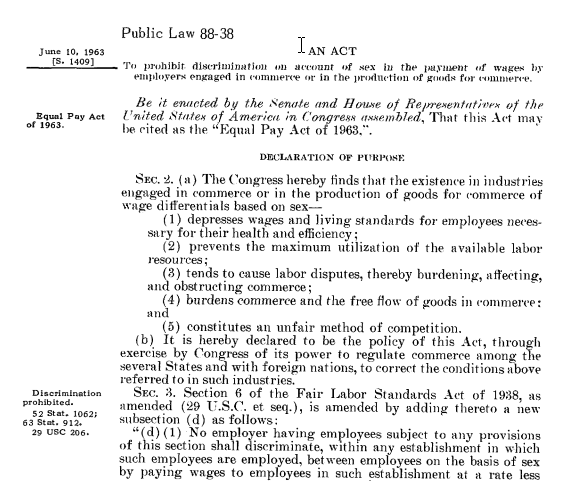
4. Passage of Title IX (1972)
Part of the Education Amendments of 1972, Title IX[12]To amend the Higher Education Act of 1965, the Vocational Education Act of 1963, the General Education Provisions Act (creating a National Foundation for Postsecondary Education and a National Institute of Education), the Elementary and Secondary … Continue reading banned discrimination on the basis of sex in any program that receives financial assistance from the federal government—thus including nearly all educational institutions. While this law did have a large impact on female admission numbers, it had a monumental impact on the rapid growth of women’s athletics. Now, any money that was spent on men’s sports programs had to be equally spent on women’s programs, which meant that the number of women’s sports teams in high schools, colleges, and universities grew exponentially. For example, prior to Title IX, there were 300,000 girls playing high school sports—now it’s more than 3 million. Female collegiate athletes have increased from 32,000 to more than 200,000. [13]Jacob Oldaker, Gender Equality in Sports, 9 WIDENER J.L. ECON. & RACE 47 (2018). This article can be found in HeinOnline’s Law Journal Library. Rampant sexism still exists in the realm of athletics, but Title IX helped garner opportunities for women to participate and excel in sports.
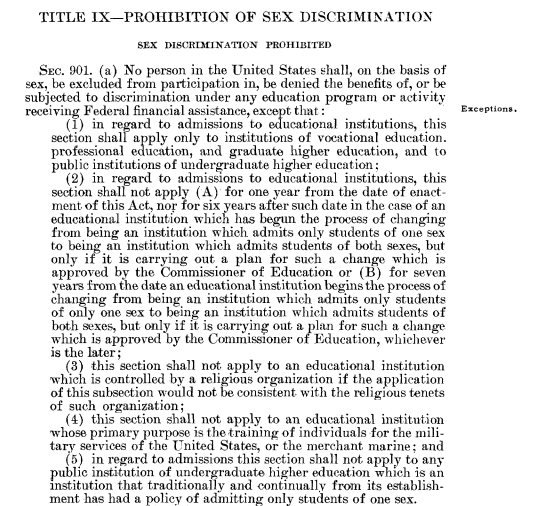
5. Roe v. Wade (1973)
In 1973, in the case Roe v. Wade,[14]Roe et al. v. Wade, District Attorney of Dallas County, 410 U.S. 113, 178 (1973). This court case can be found in HeinOnline’s U.S. Supreme Court Library. the Supreme Court determined that a Texas law criminalizing abortion except in the case of a threat to the mother’s health was unconstitutional. The Court set a precedent in this ruling that a woman’s right to an abortion falls under the constitutionally protected right to privacy. As a result of this case, women were able to access safe, legal abortions. Roe v. Wade followed previous court decisions Griswold v. Connecticut[15]Griswold et al. v. Connecticut, 381 U.S. 479, 531 (1965). This court case can be found in HeinOnline’s U.S. Supreme Court Library. and Eisenstadt v. Baird,[16]Eisenstadt, Sheriff v. Baird, 405 U.S. 438, 472 (1972). This court case can be found in HeinOnline’s U.S. Supreme Court Library. which legalized access to birth control for couples and individuals, respectively. Together, these rulings help ensure that women have control over their reproductive health, and, ultimately, the course of their lives.
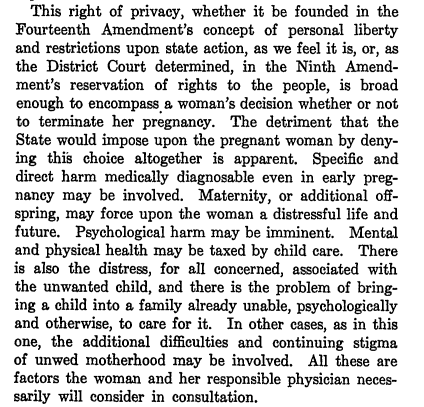
However, since this case, there have been pushes by states to once again criminalize abortion or make it difficult or impossible to access the procedure. Our blog post on the Supreme Court’s shadow docket ruling in September 2021 highlights one of the most recent threats to Roe v. Wade in Texas.
6. Violence Against Women Act (1994)
The Violence Against Women Act (VAWA)[17]To control and prevent crime., Public Law 103-322, 103 Congress. 108 Stat. 1796 (1994). This act can be found in HeinOnline’s U.S. Statutes at Large database. was signed into law by then-President Bill Clinton in 1994, designating over one billion dollars in funding to address violent crimes against women, including rape, stalking, and domestic violence. Subsequently, the Office on Violence Against Women (OVW) within the Department of Justice[18]Claire M. DeMatteis, Protecting the Freedom for Women to Be Free from Violence: The Violence against Women Act Endures, 22 WIDENER L. REV. 267 (2016). This article can be found in HeinOnline’s Law Journal Library. was formed, which worked together with the Department of Health and Human Services to help prevent domestic violence and protect victims. Grant programs included shelters, education efforts, research, advocacy, and more.
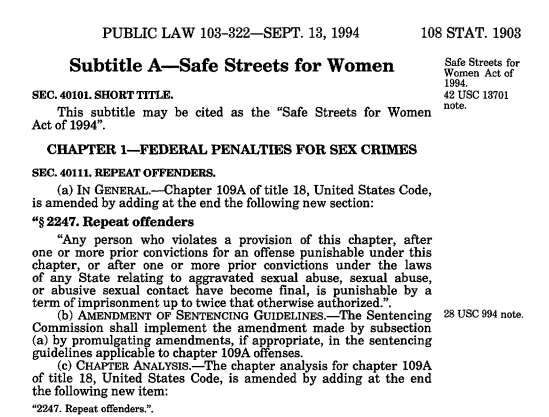
The Act was reauthorized in 2000, 2005, and 2013, but it has since expired and is being debated in Congress over proposed amendments to the legislation[19]1 1 (March 31, 2021)
Violence Against Women Act (VAWA) Reauthorization: Issues for Congress. This report can be found in HeinOnline’s U.S. Congressional Documents database. to protect the LGBTQ+ community, undocumented immigrants, indigenous women, and sex trafficking victims.
7. Presidential Bids and Women in the White House (2016-Present)
In 2016, Hillary Rodham Clinton became the first woman to receive a presidential nomination[20]William G. Mayer, Was the Process to Blame: Why Hillary Clinton and Donald Trump Won Their Parties’ Presidential Nominations, 93 N.Y.U. L. REV. 759 (2018). This article can be found in HeinOnline’s Law Journal Library. from a major U.S. political party. Even though she did not win the election, it was still the first time that there was a real possibility that America would see a woman in the Oval Office. Perhaps this is why there was a record number of women who ran for president in the 2020 election. And in late 2020, when Joe Biden won the Democratic nomination, he selected Senator Kamala Harris as his running mate, and their campaign win established Harris as the first female vice president and the highest-ranking female official in American history—in addition to being the first African American and South Asian American to hold the position.

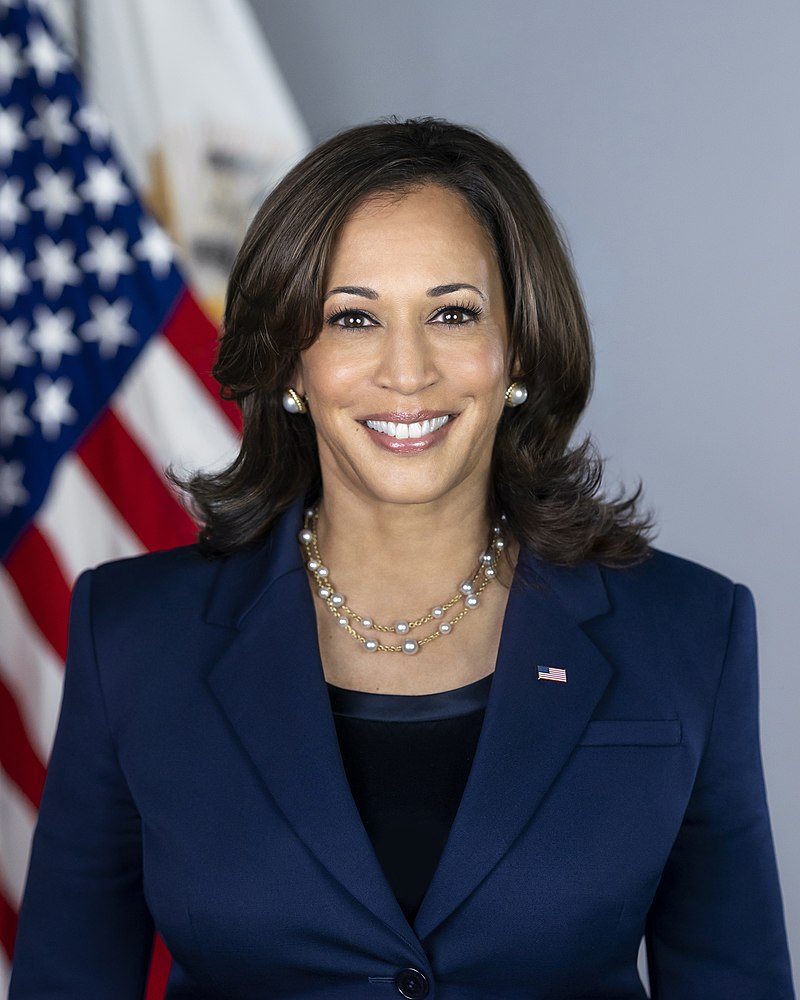
Continue Researching in HeinOnline’s Women and the Law (Peggy) Database
Looking for an impressive selection of trustworthy primary and secondary resources to expand your research during Women’s History Month? Look no further than our Women and the Law (Peggy) database! This unique collection of books, biographies, and periodicals is dedicated to the discussion of women’s rights over the centuries, covering hot topics such as abortion, the education of women, women in the workforce, and more.
In addition, our HeinOnline bloggers have written several posts examining women’s rights and women’s history. Check out the Gender Studies blog category to find posts covering #MeToo, abortion, Ruth Bader Ginsburg, Susan B. Anthony, and other hot topics.
HeinOnline Sources[+]
| ↑1 | Elizabeth Cady; et al. Stanton. History of Woman Suffrage (2). This document can be found in HeinOnline’s Women and the Law database. |
|---|---|
| ↑2 | Woman’s Rights Convention. Report of the Woman’s Rights Convention, Held at Seneca Falls, N.Y., July 19th and 20th, 1848 (1848). This document can be found in HeinOnline’s Women and the Law database. |
| ↑3, ↑5 | Declaration of Independence and the Constitution of the United States of America (1934). This document can be found in HeinOnline’s World Constitutions Illustrated database. |
| ↑4 | Abraham Lincoln. Emancipation Proclamation (1950). This document can be found in HeinOnline’s Slavery in America and the World: History, Culture & Law database. |
| ↑6, ↑7 | Virginia Sapiro, The Power and Fragility of Social Movement Coalitions: The Woman Suffrage Movement to 1870, 100 B.U. L. REV. 1557 (2020). This article can be found in HeinOnline’s Law Journal Library. |
| ↑8 | To prohibit discrimination on account of sex in the payment of wages by employers engaged in commerce or in the production of goods for commerce., Public Law 88-38, 88 Congress. 77 Stat. 56 (1963). This act can be found in HeinOnline’s U.S. Statutes at Large database. |
| ↑9 | “Women’s equal pay act of 1945.” U.S. Congressional Serial Set, , 1946, p. 1-10. HeinOnline, https://heinonline.org/HOL/P?h=hein.usccsset/usconset22995&i=1435. This document can be found in HeinOnline’s U.S. Congressional Serial Set database. |
| ↑10 | John F. Kennedy, Transcript of Interview with Mrs. Eleanor Roosevelt Recorded for National Educational Television – April 22, 1962, 1962 Pub. Papers 341 (1962). This document can be found in HeinOnline’s U.S. Presidential Library. |
| ↑11 | Report of the Committee on Private Employment to the President’s Commission on the Status of Women (1963). This report can be found in HeinOnline’s U.S. Presidential Library. |
| ↑12 | To amend the Higher Education Act of 1965, the Vocational Education Act of 1963, the General Education Provisions Act (creating a National Foundation for Postsecondary Education and a National Institute of Education), the Elementary and Secondary Education Act of 1965, Public Law 874, Eighty-first Congress, and related Acts, and for other purposes., Public Law 92-318, 92 Congress. 86 Stat. 235 (1972). This act can be found in HeinOnline’s U.S. Statutes at Large database. |
| ↑13 | Jacob Oldaker, Gender Equality in Sports, 9 WIDENER J.L. ECON. & RACE 47 (2018). This article can be found in HeinOnline’s Law Journal Library. |
| ↑14 | Roe et al. v. Wade, District Attorney of Dallas County, 410 U.S. 113, 178 (1973). This court case can be found in HeinOnline’s U.S. Supreme Court Library. |
| ↑15 | Griswold et al. v. Connecticut, 381 U.S. 479, 531 (1965). This court case can be found in HeinOnline’s U.S. Supreme Court Library. |
| ↑16 | Eisenstadt, Sheriff v. Baird, 405 U.S. 438, 472 (1972). This court case can be found in HeinOnline’s U.S. Supreme Court Library. |
| ↑17 | To control and prevent crime., Public Law 103-322, 103 Congress. 108 Stat. 1796 (1994). This act can be found in HeinOnline’s U.S. Statutes at Large database. |
| ↑18 | Claire M. DeMatteis, Protecting the Freedom for Women to Be Free from Violence: The Violence against Women Act Endures, 22 WIDENER L. REV. 267 (2016). This article can be found in HeinOnline’s Law Journal Library. |
| ↑19 | 1 1 (March 31, 2021) Violence Against Women Act (VAWA) Reauthorization: Issues for Congress. This report can be found in HeinOnline’s U.S. Congressional Documents database. |
| ↑20 | William G. Mayer, Was the Process to Blame: Why Hillary Clinton and Donald Trump Won Their Parties’ Presidential Nominations, 93 N.Y.U. L. REV. 759 (2018). This article can be found in HeinOnline’s Law Journal Library. |



